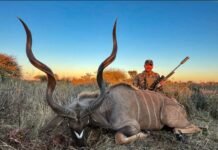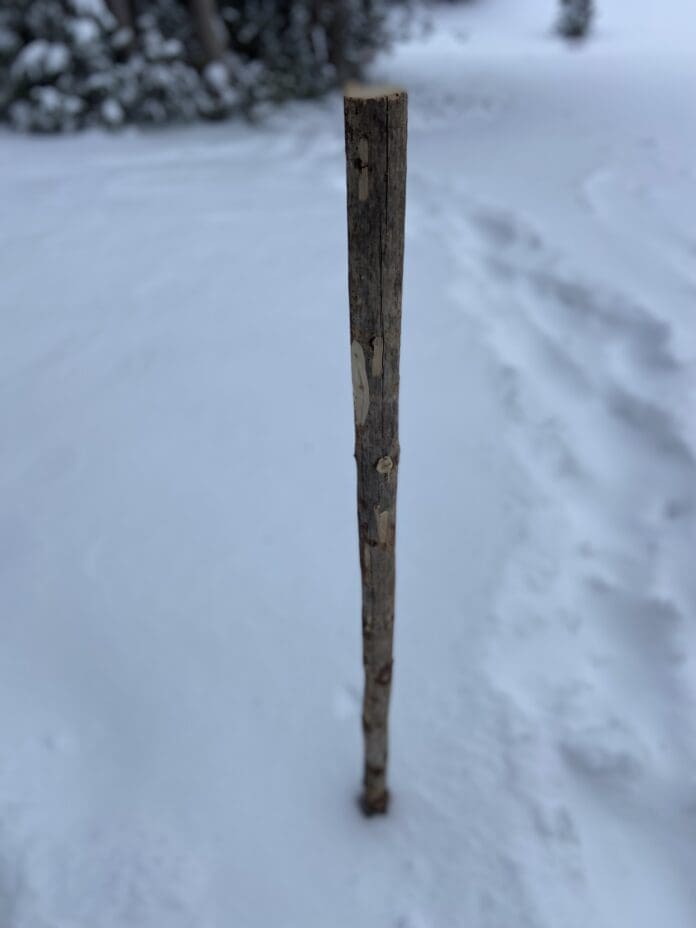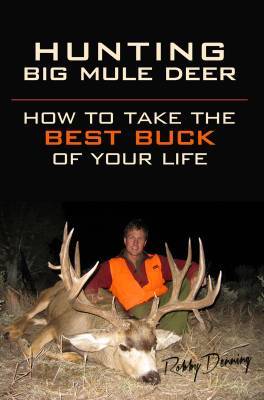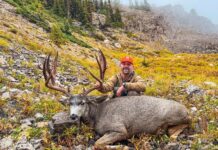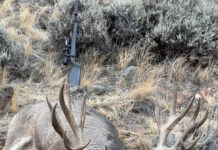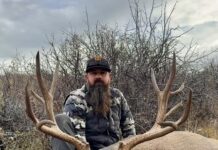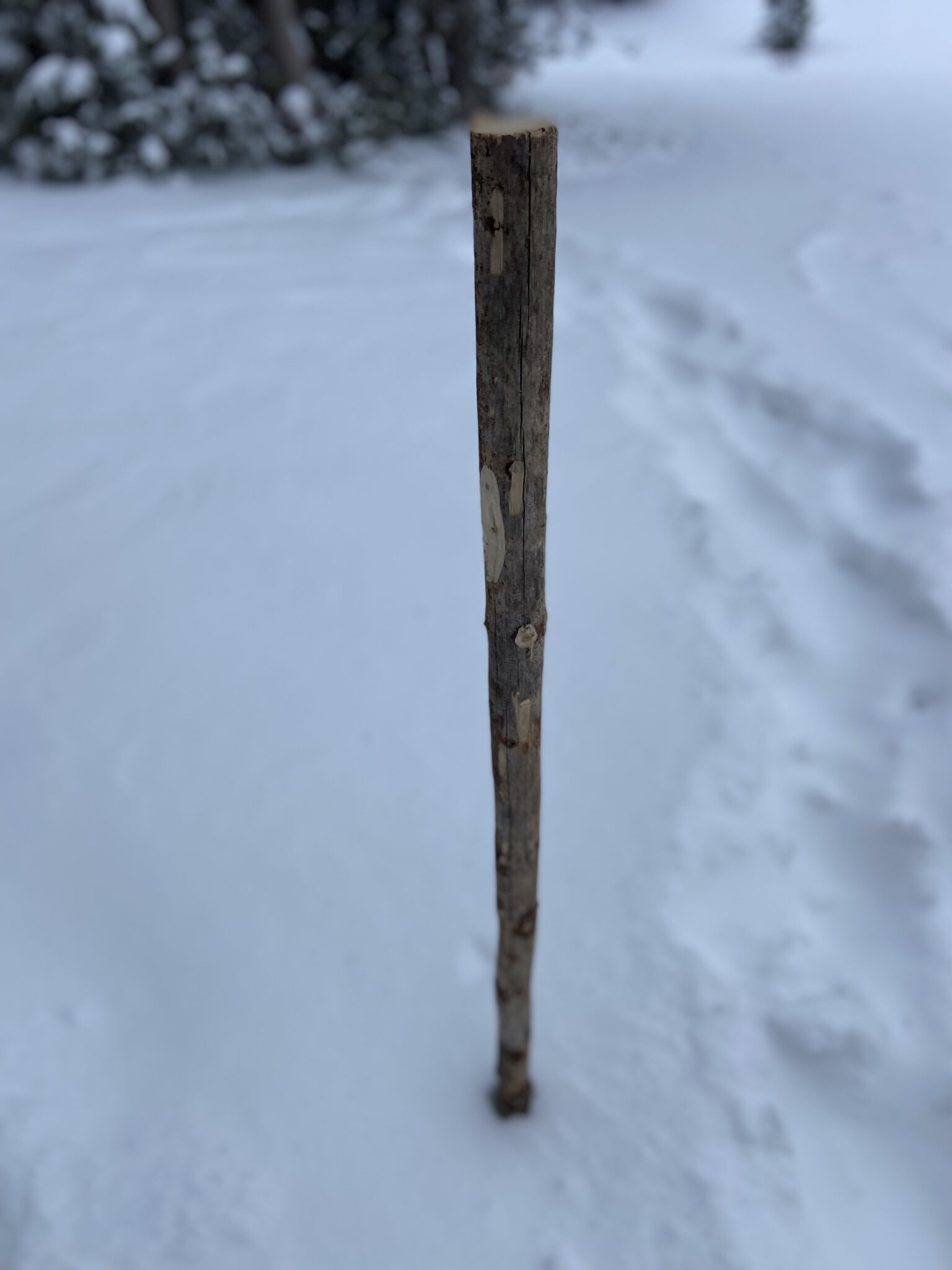
The Walking Stick—it’s more than a piece of wood cut from a wind-blown spruce.
If I need one to get around, it means that I just might be in the right place to find a big mule deer.
You see, in many years of chasing big deer in the mountains, I’ve learned that they don’t use most of the country we can see from our glassing points.
Rather, they seek out a small percentage of the country with the right combination of feed, cover, visibility, and steep slopes. This post is about those slopes.
How steep?
I find most big bucks in hunted units are using the slopes with a 30-60 degree angle. While there are exceptions, there aren’t many.
Why do they spend their time on those slopes? I can only guess that these angles provide several advantages:
Stotting
This is the unique ability of the mule deer species to bound like a pogo stick. When an animal can jump 20 feet in one bound, and that bound occurs on a steep slope, he can put a lot of ground between himself and his pursuer in a hurry.
Visibility
As most bucks spend their time on the upper 1/3 of a slope, the steeper that slope is, the more he can see. The more he can see, the harder it is for any predator (including us) to close the gap.
So where does the walking stick play into all this? If I’m hunting the right terrain, I almost always need a walking stick to stay upright.
By becoming a human tripod, I can be quieter (slipping, sliding, and falling is noisy—and dangerous.). Those double 9-inch radar stations on top of a buck’s head aren’t for decoration you know.
Another Advantage
I’ve also shot several bucks using my walking stick to get steady in the few seconds they gave me. I just simply kneel down and rest my rifle in the crotch made by my left index finger and my thumb where it wraps around the stick (lefties just reverse hands).
You’re good to about 200 yards using this method—which is about the average distance I’ve killed all my big mule deer.
What about a Trekking Pole?
You can use a trekking pole, but the woods are full of trekking poles. That’s why my Leatherman always has the saw blade accessory. Then I can cut one when I need it and I don’t have to pack an extra piece of gear for all the times I don’t.
If you go the au natural route, try to cut a stick from a dead & seasoned (but not brittle ) tree that is about 1.5” diameter where your hand will grasp it. It needs to be tall enough that your elbow is bent when then point is on level ground next to your foot.
Always trim any sharp edges left by your saw because you will probably fall on your walking stick if you’re in good buck country.
After all, if you’re in the right place, it’s gonna be steep.
Rokslide members can discuss this blog post here
Read more about mule-deer-gear in my book. Signed copies are available in the Rokslide store, or you can go Amazon for faster delivery.








